
SmartLock System
Challenge: Security is of utmost importance for a data center from the very first moment someone tries to access the building, nonetheless, according the latest study Uptime Institute in 2022, over the past 3 years nearly 40% of organizations suffered a major outage cause by human error, out of which 85% were caused by staff failing to follow procedures or flaws in the process.
Solution: Legrand's SmartLock™ solution delivers a remotely monitored and managed cabinet access solution that makes sure that your cabinet is only accessed by the staff meant to do so. Opting for SmartLock™ solutions is necessary to meet regulatory compliance mandates from PCI DSS, SOX, HIPAA, GDPR and EN50600.
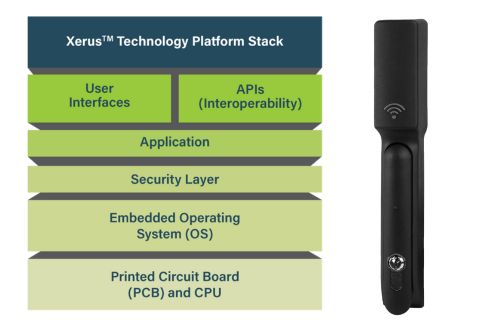
Benefits of SmartLock
Legrand's SmarLockTM is a networked and intelligent electronic door access that can be connected to different Raritan and Server Technology Power products, seamlessly integrated with XerusTM.
- Vendor agnostic solution, easily retrofits any deployment
- Control the locks through the XerusTM web interface or integrate into any third-party management software
- Simplify operations, while enabling enterprise-level security
- Automate physical access monitoring: Grant temporary access permits, set cabinets to open status during planned maintenance activities and more
- Reduce total deployment effort and cost
How Does SmartLock Integration
Looks Like?
When using electronic locks that are SmartLockTM compatible, you will be saving space and costs as the integration, monitoring and management of the solution is done with XerusTM by connecting the handles to your Raritan or Server Technology power device. Allowing for easy integration into any DCIM, CMDB or BMS Software
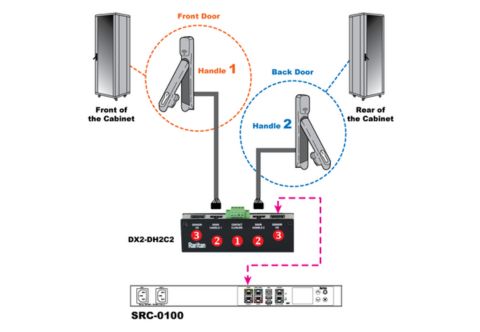
Integration with in-Rack Intelligent Power Products
The Electronic Locks is connected to the small Raritan's SmartLock Intelligent door controller (Product Reference: DX2-DH2C2). This device is then connected to any of the following.
- Server Technology PRO3X & PRO4X Rack PDUs
- Raritan PX3 & PX4 Rack PDUs
- Raritan SRC-0800 & Raritan SRC-0100 (shown in the image)
- Raritan PX3 Inline Meters
- Raritan PX3TS Hybrid Rack Transfer Switches
- Raritan BCM2 Branch Circuit Monitors
- Raritan PXO Compact PDUs
As simple as that and without claiming 1U in your cabinet only for a monitoring box. When using any of the power products listed above, all you need is the SmartLockTM compatible Elocks and a DX2-DH2C2.
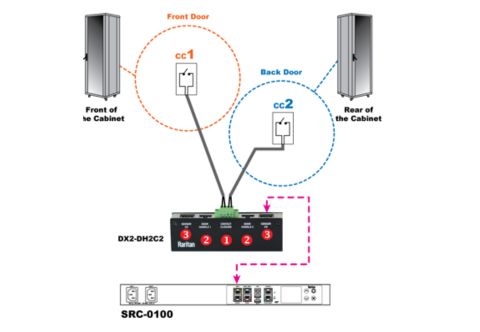
Contact Closure Door Sensors. A Must-Have
There is the possibility of closing the your electronic lock with the door open, in this case the software will report the door as closed while it is actually open.
This will remain unseen unless you install contact closure sensors that wil let you know if the door is in its locked or open position.
Minkels offers dry contact closure sensors that can be connected to the DX2-DH2C2 as shown.
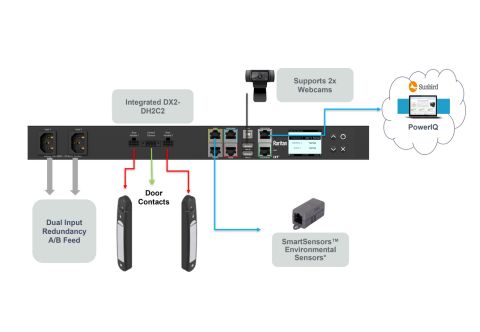
Integration with Non-Intelligent Rack PDUs
If you are looking to have a logged and audited access to cabinets but your facility is running with non-networked rack PDUs, Legrand has a solution for you.
Select SmartLockTM compatible Elocks and a Smart Rack Controller (link to page32-Smart Rack Controller) to have the handles integrated in XerusTM with all the benefits previously described
For these deployments it is recommended to use the SRC-0102 or the SRC-0103, for standard or 48VDC applications respectively. These two Smart Rack Controllers have a DX2-DH2C2 integrated.
How Secure is Your Secured Data Center?
The world of access control technologies is difficult to navigate and understand. In the following lines you find a brief description of the different options available for you. All the options described below are logged and audited solutions.
Elock With No Card Reader
Lock opens using a dry contact that is activated through management system or direct power supply.
Elock With Low Frequency Card Reader (125 kHz Prox)
The card has a string of binary code as the encryption method. This code is transmitted by radiowaves to the eletronic lock (reader). Each card is preloaded with one code that is unique to the card. As this is the only piece of information used for identification the cards are easy and fast to copy with devices available on the web for slightly above € 10,00.
Elock with High Frequency Card Reader (13,56 MHz)
The card and reader communicate at more than 10 times the speed of 125 kHz Prox. This means that in the time that low frequency solutions just transmit one binary code, high frecuency ones can transmit much more information and implement additional security measures to protect this information.
Elock with High Frequency Card Readers (13,56 MHz) SEOS compatible
As technology evolves, High Frequency cards are becoming easier to clone. That is why SEOS is set in a different category. SEOS is a proprietary technology of HID that works at the 13.56 MHz but is secured a step higher. Software-based technology, not tied to the chip in a card, this means that can be used with other devices such as mobile phones or smartwatches for example.
Low Frequency solutions worked by simply transmiting the code from card to reader and the reader checked that the card's code is allowed to open the lock.
High Frequency technologies enhanced the security adding different steps thanks to the improvements in speed. Before transmiting the ID code to the reader, the card first authenticates the reader to ensure that it is part of a geniune solution and not a cloning device. Once authenticated, the ID code is transmitted between card and reader with an encryption step in between.
Different high frequency card technologies have been developed through the years that added more layers of security for the information that needs to be transmitted.
The most widely used chips in cards from less to more secure are: MIFARE Classic, MIFARE Plus, MIFARE DESFire.
The latest and most advanced technology is SEOS. First physical access control card to ever have been certified by an independent security laboratory, TÜV certified as SEAL-5 (highest level attainable). Ideal solution for organizations with stringent security requirements such as military, government, banks, healthcare...

What Electronic Lock Is Best for Me?
As you have seen, multiple brands are available that deliver an audited and logged solution. In Legrand continue to make efforts to enable our customers to make the best choice for their facilities, that is why we remain vendor agnostic want to help you choose the solution that better fits your needs.

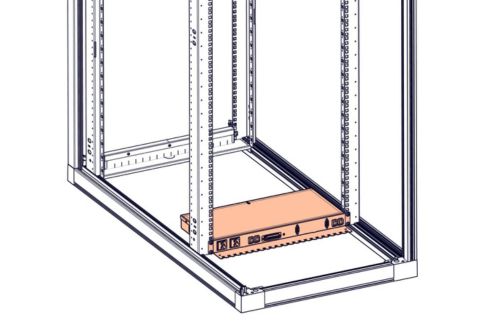
Non SmartLock Solutions
Are you opting for an electronic locking solution that is not one of SmartLockTM compatible choices?<br><br>Not a problem, all the possibilities in the previous table are at your disposal to be requested from us.<br><br>Keep in mind that you will need to implement proprietary software from the electronic lock manufaturer in your facility and 1U of your rack will be occupied by a monitoring box as shown in the image.
Ready to take the step to a more secured data center
Please allow a minute for the confirmation to arrive in your email
























 Canada
Canada
 Latin America (English)
Latin America (English)
 Latin America (Espanol)
Latin America (Espanol)
 USA
USA
 China
China
 India
India
 Japan
Japan
 Republic of Korea
Republic of Korea
 South East Asia (English)
South East Asia (English)
 Austria
Austria
 Belgium
Belgium
 France
France
 Germany
Germany
 Italy
Italy
 Netherlands
Netherlands
 Spain
Spain
 Switzerland
Switzerland
 Turkey
Turkey
 UK
UK
 Africa (english)
Africa (english)
 Africa (français)
Africa (français)
 Middle East (english)
Middle East (english)
 Australia
Australia
 New Zealand
New Zealand




